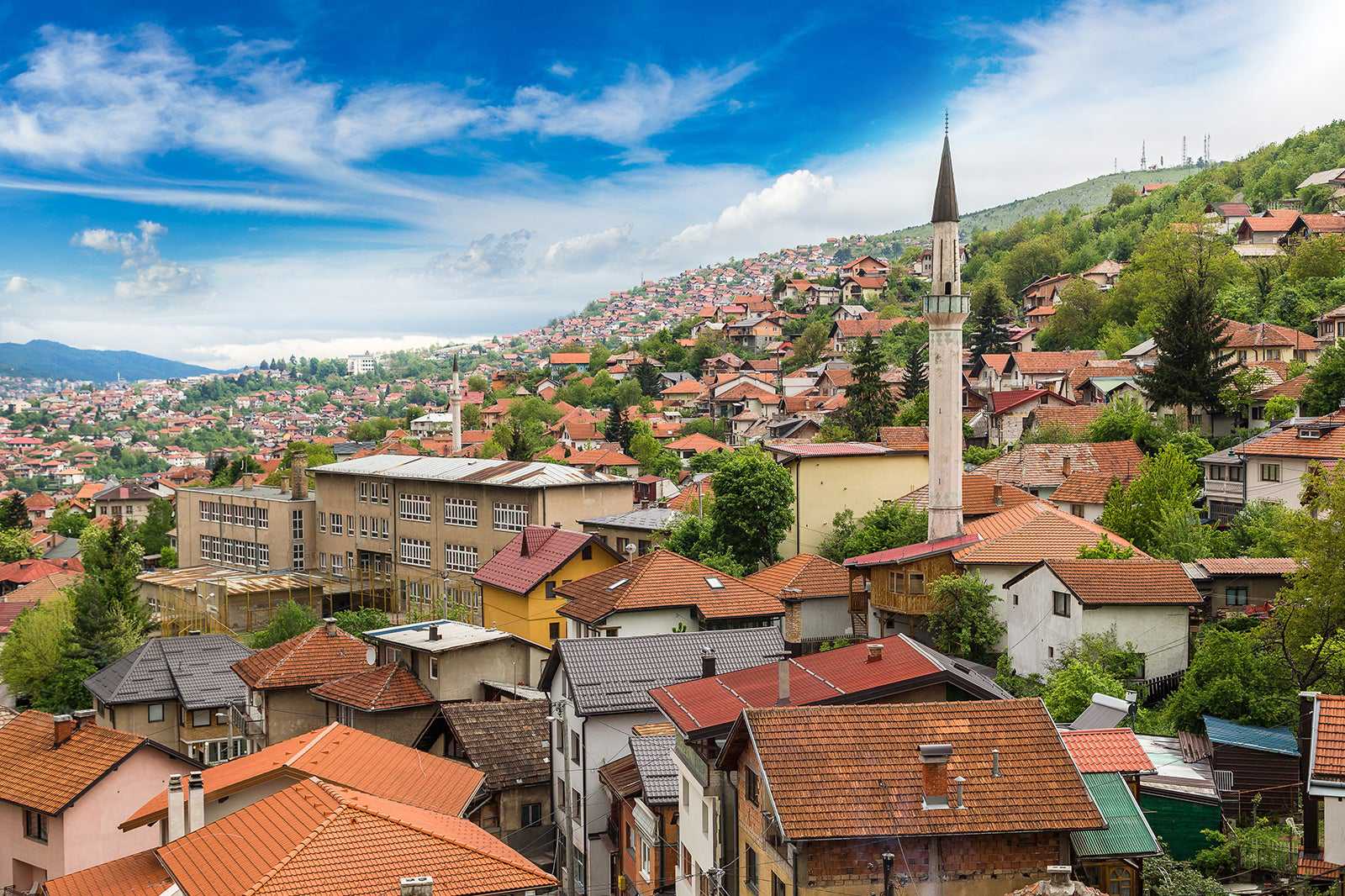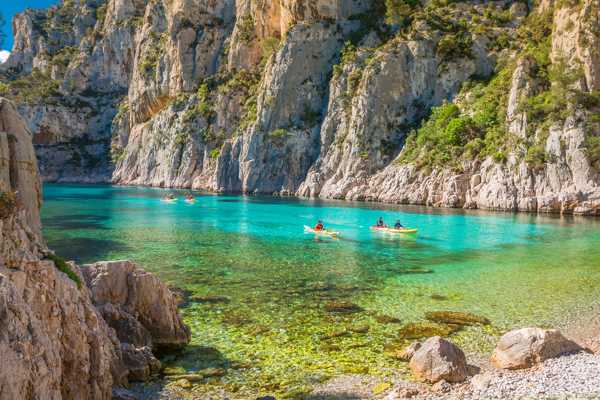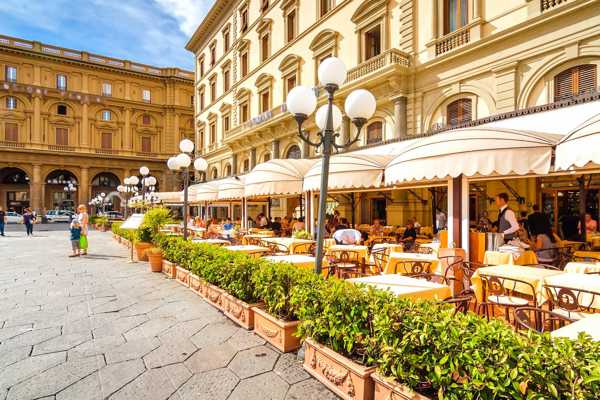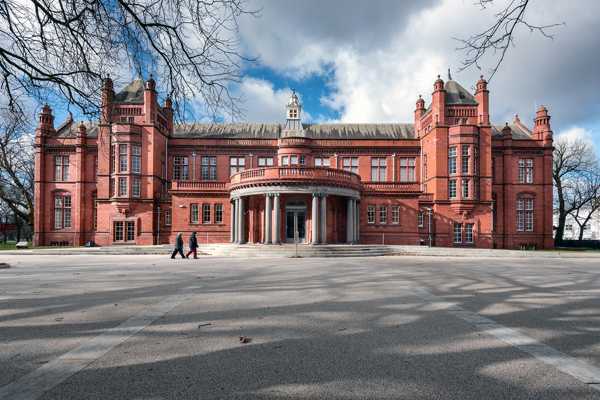Sarajevo is a city that showcases a varied and often tragic history. The name itself, acquired during the mid-15th century, comes from the Turkish word saraj – meaning ‘palace’. It established itself as a crucially important market on the east-west trading lines, then transferred from the fading Ottoman Empire to Austro-Hungarian rule. More recently, it hosted the Winter Olympics in 1984, then a brutal and bloody siege during the Bosnian War in the early 1990s. As you might expect, Sarajevo is a place that houses a whole host of important historical landmarks.
From the first electric tram in all of Europe to the spot that marks the beginning of World War I, wherever you wander in Sarajevo, you'll be reminded of the important place that the city occupies in human history. You'll also find it hard not to be moved by such important stories of days past.
- 1
Sarajevo Meeting Of Cultures
Where east meets west

- 알뜰 여행
- 역사
- 사진
This detailed landmark may not look like much at first glance, but it marks the spot where 2 dominant cultures meet. On one side, you’ll find mostly Christian Austro-Hungarian influences. On the other, you’ll see mostly Islamic Ottoman influences. Work your way through clothing boutiques and aromatic perfumeries before crossing the line into an entirely different world, filled with bustling markets teaming with obscure trinkets.
The line on the pavement marking the meeting point is easily located on Ferhadija Street, near Gazi Husrev Bey's Bezistan in the Old Town. You’ll notice the stark architectural contrasts between east and west, with the unique opportunity to cross from one to the other in just a few steps.
주소: Ferhadija, 71000 Sarajevo, Bosnia and Herzegovina
지도사진 제공: Buiobuione (CC BY-SA 4.0) 수정됨
- 2
The Emperor’s Mosque
One of the most beautiful Ottoman mosques in the Balkans

- 알뜰 여행
- 역사
- 사진
As the very first mosque built after the Ottoman conquest of Bosnia, The Emperor’s Mosque – also known as Sultan Fatih – tells a tale of rich religion and symbolic history. There’s no fee to enter, and after stepping foot inside, you can expect to find roomy interiors and ornately decorative details, built in the classical Ottoman style. Look out for the beautiful mihrab (a niche in one wall, indicating the direction to Mecca), in particular.
As one of the oldest mosques in Bosnia and Herzegovina, this dazzling building has been through war and the occasional fire, but it still stands strong today thanks to some impressive rebuilding and renovation along the way.
주소: Obala Isa-bega Ishakovića, Sarajevo 71000, Bosnia and Herzegovina
지도 - 3
Sarajevo City Hall
A living testament to Sarajevan resilience

- 역사
- 사진
As a neo-Moorish architectural gem, the spectacular Sarajevo City Hall stands out like something out of a storybook. From its stunningly stained glass ceiling to its magnificent mosaic, you’ll find yourself getting lost in such beautifully decorated interiors. Also known as Vijećnica, the historical building was effectively destroyed in 1992, but was painstakingly rebuilt to how it looked in 1896, when it first opened.
Find your way to the intriguing basement museum, where you’ll encounter various historical photographs. You won’t find many written texts so it’s worth spending a little extra for the audio app as you work your way around the atrium. You won’t need to spend more than 30-45 minutes inside, but you'll find a little piece of Sarajevan solitude that makes it worth lingering for longer.
주소: Obala Kulina bana, Sarajevo 71000, Bosnia and Herzegovina
지도 - 4
The Latin Bridge
The place where the First World War started

- 알뜰 여행
- 역사
- 사진
Built by the Ottoman Empire in the 1550s, the Latin Bridge is undoubtedly the most famous crossing point on the River Miljacka. This is the place where the Archduke of Austria-Este Franz Ferdinand and his wife Sophie, Duchess of Hohenberg, were fatally shot in 1914.
Many people think the bridge itself was the site of the couple's execution, but if you head to the small museum on the corner of the street, you’ll come across a plaque that marks the exact spot of their untimely deaths. As the spot that essentially started World War I, you can’t help but feel moved with a visit to The Latin Bridge.
주소: BA, Obala Kulina bana bb, Sarajevo 71000, Bosnia and Herzegovina
지도 - 5
The Eternal Flame
A touching memorial for the Second World War

- 알뜰 여행
- 역사
- 사진
Situated in the old part of Sarajevo, The Eternal Flame is a beautiful and moving memorial to those who lost their lives in the city during the Second World War. As you can guess from the name – which is written as Vječna Vatra in the local language – this is one fire that is forever lit, day or night, no matter the season.
Initially unveiled in 1946, on the first anniversary of Sarajevo’s liberation, this historical icon is impossible to miss. It makes for a great photo opportunity – once you bypass the crowds and get in among the selfie sticks – and serves as a long-lasting symbolic reminder of the fight for freedom and the price paid for it by both military personnel and civilians.
주소: Ferhadija Street, Sarajevo, Bosnia and Herzegovina
지도사진 제공: Pudelek (CC BY-SA 3.0) 수정됨
- 6
The Tunnel of Hope
Vital supply line turned moving museum

- 역사
- 사진
The Tunnel of Hope was once a masterpiece of ingenuity and industry, providing a vital lifeline for the besieged city of Sarajevo. Small in size but steeped in emotional moments, the tunnel is now a museum to the harrowing years of conflict between 1992 and 1995, and the skill the Bosnians were able to employ in order to survive.
Gaining popularity as a historical site to visit, the Tunnel Of Hope costs just 10 marks to step foot inside. Visitors are shown a short video explaining the tunnel’s history before entering, with a free audio guide on offer to help highlight its tragic tale as you move along the tunnel’s 20-metre length.
주소: BA, 1, Tuneli, Sarajevo 71000, Bosnia and Herzegovina
운영 시간: Daily, from 9am to 5pm
전화: +387 (0)33 684-032
지도 - 7
War Childhood Museum
Heart-wrenching stories of growing up in a city under siege

- 역사
As the name implies, Sarajevo’s War Childhood Museum houses displays from those who grew up during the Siege of Sarajevo in the 1990s. Once you step foot inside the sombre walls, you’ll hear a brief history of the exhibit before wandering through the halls, reading the various plaques and listening to some moving interviews.
Make sure to bring a tissue or 2 along, as the demonstrations of the fragility and beauty of childhood alongside the innocence that shows its head even in the most tragic of times are real tearjerkers. You'll find it hard not to be moved by such heartbreakingly honest childhood war stories.
주소: 30-32, Logavina, Sarajevo, Bosnia and Herzegovina
운영 시간: Daily from 11am to 7pm
전화: +387 (0)33 535-558
지도사진 제공: Anida Krečo (CC BY-SA 4.0) 수정됨
- 8
The Sarajevo Roses
A moving tribute to the Siege of Sarajevo

- 역사
- 사진
The Sarajevo Roses are a striking reminder of the constant bombardment that the city faced during the Bosnian War. At its peak, Sarajevo was struck by around 300 shells on a daily basis, leaving behind brutal scars on the buildings and pavements. In the aftermath, the holes caused by the explosions were filled in with red resin, repairing the damage without hiding it.
The residents nicknamed these red scars the “Sarajevo Roses”. Each potentially marks the place where a Sarajevan was killed, essentially at random. They put the thousands of casualties from the conflict into a more personal perspective. It’s both a touching tribute and an important reminder of the tragedy the city has faced.
사진 제공: Superikonoskop (CC BY-SA 4.0) 수정됨
- 9
ICAR Canned Beef Monument
One of the world’s most sarcastic memorials

- 알뜰 여행
- 역사
- 사진
The ICAR Canned Beef Monument is a fine example of the sarcastic sense of humour of Sarajevans. During the Bosnian War, the defending army found themselves ill-equipped with weapons, leading to the unbreakable siege. As that took hold, food supplies began to run short, causing an international appeal for help.
The help that arrived was, in the opinion of the monument’s designer, Nebojsa Seric Shoba, completely unhelpful. It reportedly included canned food that was over 20 years past its use-by date and which even the animals of the city refused to eat. In a delightful display of irony, the inscription on the plinth below the giant can of beef reads: “Monument to the International Community by the grateful citizens of Sarajevo”.
주소: Marijin Dvor, Sarajevo 71000, Bosnia and Herzegovina
지도사진 제공: Tony Bowden (CC BY-SA 2.0) 수정됨
- 10
Old Electric Distribution Center
A site of innovation and desperation
- 알뜰 여행
- 역사
- 사진
- 이색 체험
The Old Electric Distribution Center in the Marijin Dvor neighbourhood was responsible for powering the very first electric tram in Europe, as well as lighting up the streets of Sarajevo. It was once one of the most important industrial units built during Austro-Hungarian rule, though is sadly just an empty shell now.
Sitting at the intersection of Hiseta and Kotromanića Street, the center was at the heart of a fierce battle between members of Sarajevo’s underground resistance and fascist troops in 1945. Designed by Czech-born architect Karl Paržik, the site hasn’t been in operation since 1992, but remains well worth a visit on your Sarajevo travels, particularly if you’re fond of abandoned buildings.
주소: Hiseta / Kotromanića, Sarajevo 71000, Bosnia and Herzegovina
지도



















